Florida, known as the Sunshine State, is not only famous for its sunny beaches and orange groves but also for its diverse birdlife. This guide will introduce you to 11 spectacular blue bird species that call Florida home, complete with stunning photographs and enlightening information about each bird.
Whether you are a seasoned birdwatcher or a beginner, this guide will be your companion as you explore the breathtaking beauty of Florida’s blue feathered friends. So, grab your binoculars, slather on some sunscreen, and let’s dive into the world of Florida’s blue birds!
Blue Birds Found In Florida
Florida is a flat, low-lying peninsula bordered by the Atlantic Ocean to the east and the Gulf of Mexico to the west, characterized by its extensive coastline, wetlands, and citrus groves.
Florida’s diverse geography, which includes a variety of habitats like marshes, forests, and beaches, coupled with its subtropical and tropical climate, makes it a haven for a wide range of bird species. Its position as a peninsula also makes it a key location on the migratory route of many bird species, contributing to its biodiversity.
The abundant wetlands provide the perfect breeding and feeding grounds for not only blue birds but also for numerous other bird species, making Florida a paradise for bird watchers and nature enthusiasts alike.
Eastern Bluebird
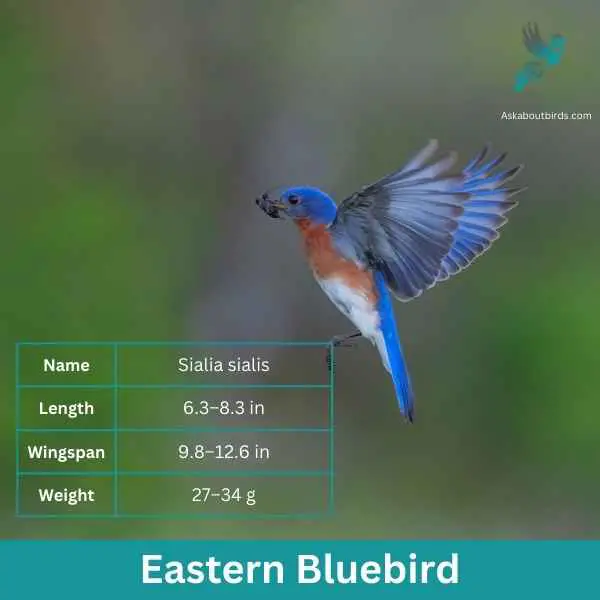
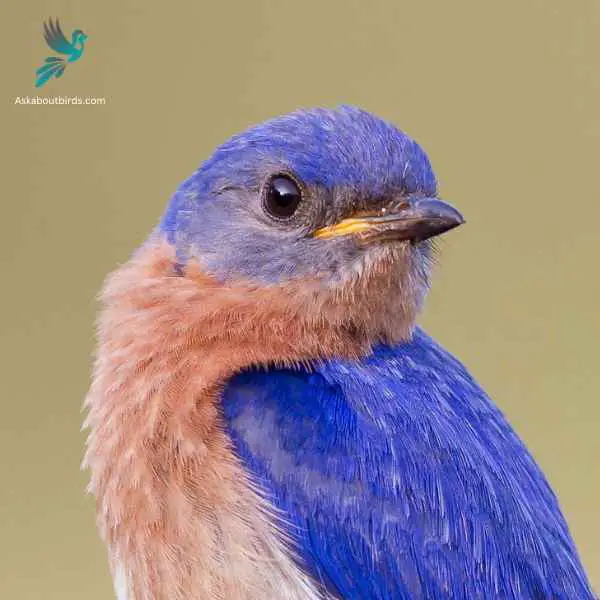
| Feature | Measurement |
|---|---|
| Scientific Name | Sialia sialis |
| Length | 6.3–8.3 in |
| Wingspan | 9.8–12.6 in |
| Weight | 27–34 g |
The Eastern Bluebird (Sialia sialis) is a small thrush found in open woodlands, farmlands, and orchards, and is recognized for its vibrant blue and red coloration. Male Eastern Bluebirds are dazzling with bright blue upperparts and a rusty or brick-red throat and breast, while females, though less colorful, still offer a similar pattern. The bird is native to North America and is commonly seen east of the Rockies, from Canada to the Gulf States and southeastern Arizona to Nicaragua.
Eastern Bluebirds feed on insects, wild fruit and berries. They have a gentle nature and are often seen perched alone or in small groups in the open, scanning the ground for prey. They are cavity nesters and will use old woodpecker holes or birdhouses if they are the right size.
Florida Scrub-Jay
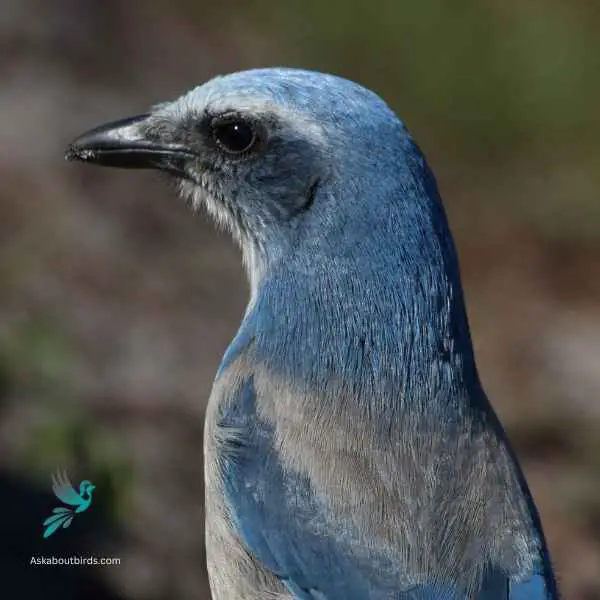
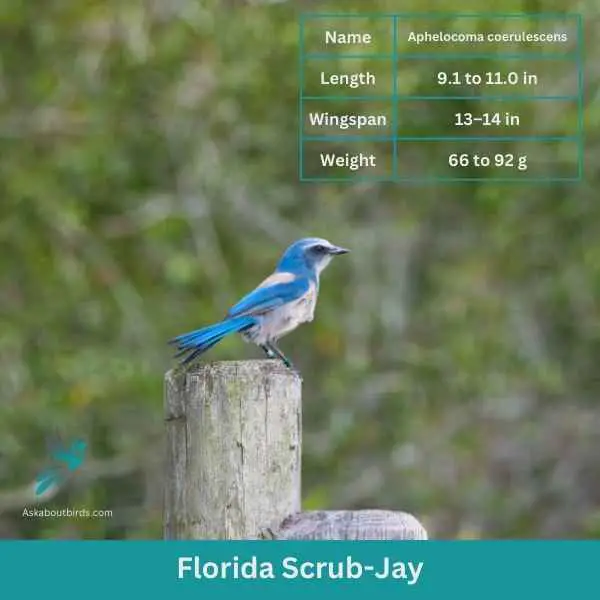
| Feature | Measurement |
|---|---|
| Scientific Name | Aphelocoma coerulescens |
| Length | 9.1 to 11.0 in |
| Wingspan | 13–14 in |
| Weight | 66 to 92 g |
The Florida Scrub-Jay is a striking, cooperative-breeding bird endemic to the sandy scrublands of Florida. It stands out as the only species of bird restricted entirely to the state of Florida.
Appearance: The Florida Scrub-Jay exhibits a bright blue head, wings, and tail, contrasting with its pale gray underbelly and nape. Its stout bill, legs, and eyes are black. Unlike other jays, it lacks a crest on its head.
Diet: Primarily, the diet of the Florida Scrub-Jay consists of a variety of insects and small animals, seeds, and especially acorns. They have a unique behavior of storing thousands of acorns, burying them in the ground as a food reserve for the lean winter months.
Reproduction: These jays are monogamous and often form family groups. They typically nest in shrubs or low trees. The nest, built primarily by the female, is made of twigs and lined with fine plant material. The female lays a clutch of 3 to 4 eggs, which are pale greenish or bluish and spotted with brown.
Blue Jay

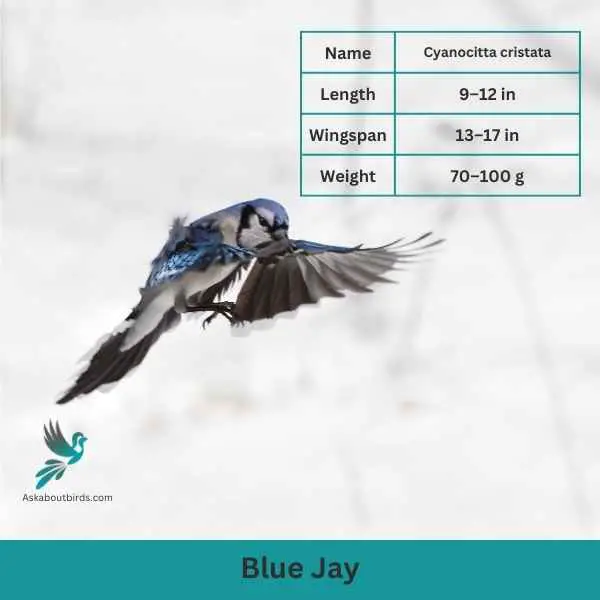
| Feature | Measurement |
|---|---|
| Scientific Name | Cyanocitta cristata |
| Length | 9–12 in |
| Wingspan | 13–17 in |
| Weight | 70–100 g |
The Blue Jay is a vibrant and easily recognized bird, known for its intelligence, distinctive calls, and bold behavior, commonly found throughout the eastern and central United States.
Appearance: The Blue Jay sports a striking blue upper body with white and black markings. Its face has a pronounced white patch with a black necklace that runs across the throat and around the head. The bird also features a pronounced blue crest, which can be raised or lowered, and its wings and tail are brightly colored with black bars and white tips.
Diet: Blue Jays are omnivores. Their diet consists primarily of seeds, nuts, especially acorns, fruits, and small insects. They’ve also been known to eat eggs or nestlings of other birds occasionally. Blue Jays often store food items in caches to eat later.
Reproduction: Blue Jays are monogamous birds that form long-lasting pair bonds. They typically build their nests in trees or large shrubs, constructing them from twigs, grass, and sometimes using mud as a binder. The female lays a clutch of 3 to 6 eggs, which are pale blue or sometimes white with brown speckles.
Indigo Bunting


| Feature | Measurement |
|---|---|
| Scientific Name | Passerina cyanea |
| Length | 4.5–5.1 in |
| Wingspan | 7.1–9.1 in |
| Weight | 11.2–21.4 g |
The Indigo Bunting is a strikingly vibrant songbird, often hailed for its brilliant blue plumage and melodic song that graces woodlands and meadows during the warmer months.
Appearance: Males are renowned for their bright indigo blue feathers, which can appear darker in certain lights. Females and juveniles, on the other hand, are brown with subtle hints of blue on their wings and tail. The species lacks the vibrant streaking or spotting commonly found in many other songbirds.
Diet: Indigo Buntings primarily subsist on seeds, especially during non-breeding seasons. During the breeding season, they also consume a variety of insects such as beetles, caterpillars, and spiders, providing essential protein for their growing chicks.
Reproduction: Indigo Buntings build their nests close to the ground in shrubs or low tree branches. These nests, crafted meticulously with grasses and other plant materials, cradle clutches of typically 3 to 4 eggs. After hatching, the young are fed by both parents until they’re ready to fledge.
Blue Grosbeak
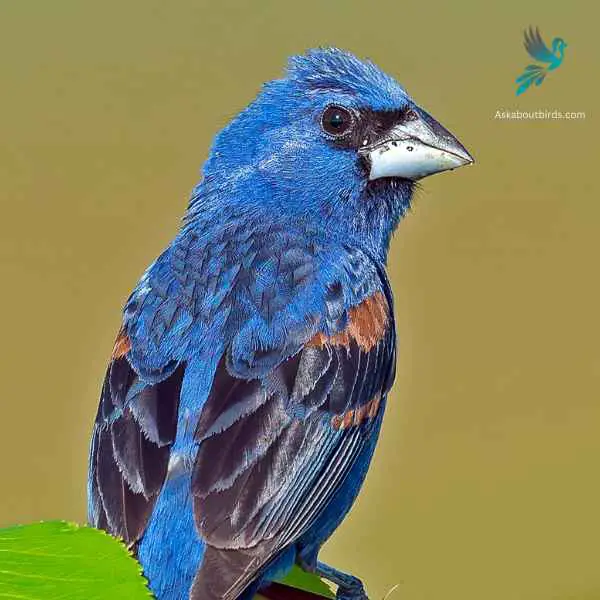

| Feature | Measurement |
|---|---|
| Scientific Name | Passerina caerulea |
| Length | 5.5 to 7.5 in |
| Wingspan | 10 to 11 in |
| Weight | 26 to 31.5 g |
The Blue Grosbeak is a medium-sized songbird found in North and Central America. The male Blue Grosbeak displays stunning plumage with deep blue feathers on its body and head, while the female has more subdued brownish tones. Both sexes have a thick, conical bill, which gives them their name “grosbeak,” meaning large beak.
These birds prefer open habitats such as grasslands, brushy areas, and woodland edges. Blue Grosbeaks are known for their melodious songs, which consist of a series of rich and varied notes. They primarily feed on seeds and insects, using their strong beaks to crack open seeds and forage on the ground or in low vegetation.
Little Blue Heron
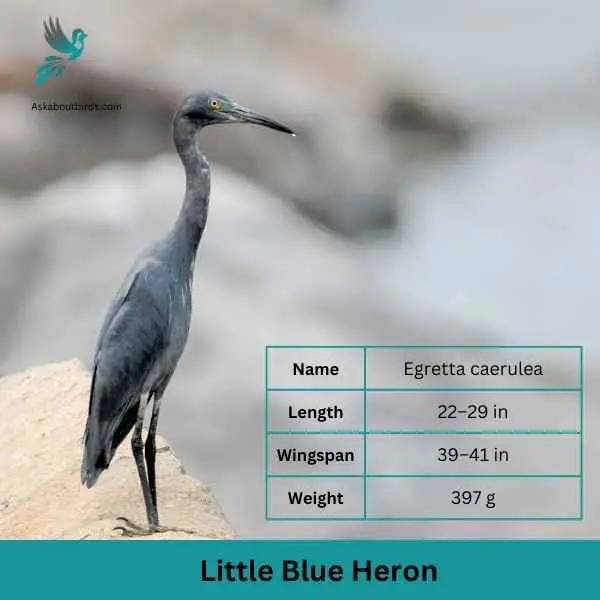
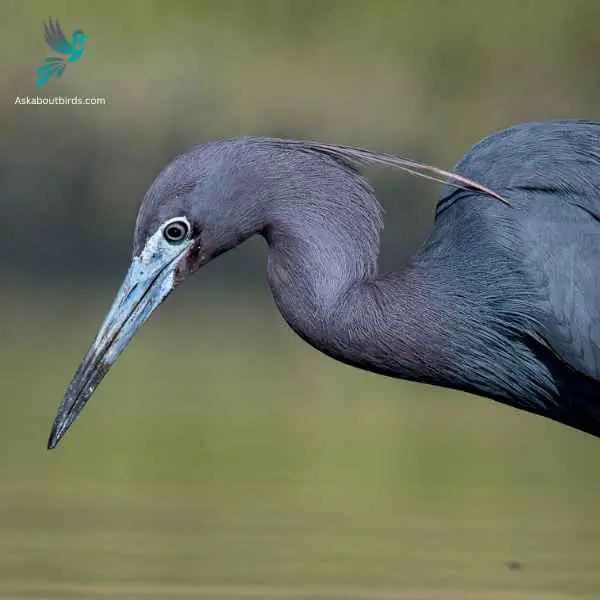
| Feature | Measurement |
|---|---|
| Scientific Name | Egretta caerulea |
| Length | 22–29 in |
| Wingspan | 39–41 in |
| Weight | 397 g |
The Little Blue Heron is a slender and elegant wading bird, often seen foraging in freshwater or saltwater habitats, especially in the southeastern parts of the United States.
Appearance: This heron undergoes a fascinating color transition as it matures. Juvenile Little Blue Herons are white, but they gradually acquire the slate-blue plumage that characterizes adults. The adult has a dark blue-gray body with a purplish neck and head. Their bill is grayish with a black tip.
Diet: The diet of the Little Blue Heron consists mainly of small fish, but they also feed on crustaceans, insects, and other small aquatic animals. Using stealth, they slowly stalk their prey in shallow waters before striking with their long, sharp bill.
Reproduction: Little Blue Herons nest in colonies, often with other wading birds. They build platform nests in trees or shrubs close to water bodies. The female typically lays a clutch of 3 to 5 pale blue eggs. Both parents participate in incubation and feeding the chicks once they hatch.
Tricolored Heron
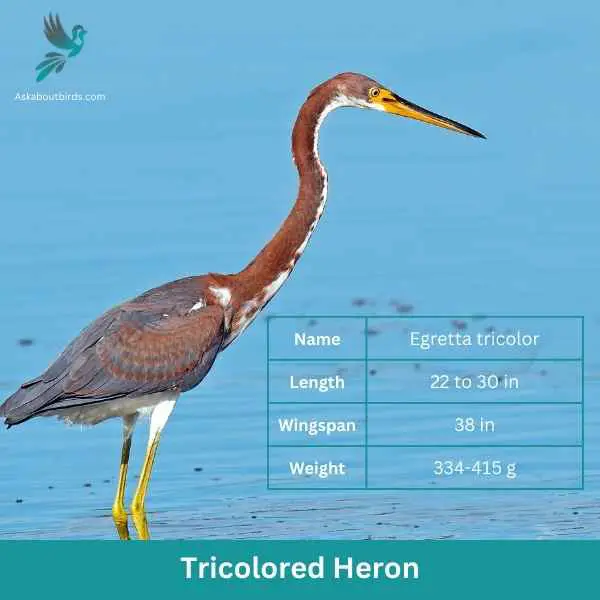
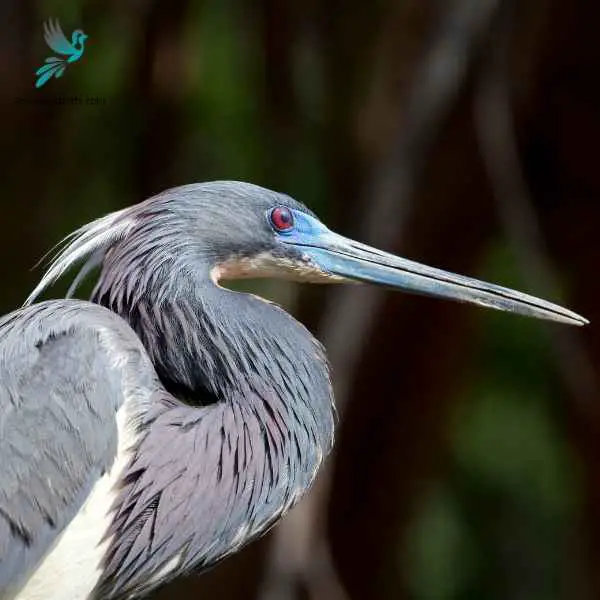
| Feature | Measurement |
|---|---|
| Scientific Name | Egretta tricolor |
| Length | 22 to 30 in |
| Wingspan | 38 in |
| Weight | 334-415 g |
The Tricolored Heron (Egretta tricolor), formerly known as the Louisiana Heron, is a slender, medium-sized heron species recognized for its distinctive three-colored plumage.
It exhibits a blue-gray body contrasted by a white belly and a rust-colored neck, which deepens to a maroon shade during the breeding season. The long, pointed yellowish bill turns blue at the base in breeding adults, further accenting its striking appearance.
Native to coastal parts of the southeastern United States, the Tricolored Heron inhabits salt marshes, mangrove swamps, tidal flats, and freshwater wetlands. It feeds on a diet primarily of small fish, utilizing a unique hunting technique where it often runs through shallow water, spreading its wings to create shade and startle prey.
Western Scrub-Jay
| Scientific Name | Length | Wingspan | Weight |
|---|---|---|---|
| Aphelocoma californica | 11-12 inches | 15 inches | 2.8-3.5 oz. |
The Western Scrub-Jay is a distinctively colored bird known for its bright blue and grey plumage, often seen hopping through low vegetation or perched high on tree branches.
Appearance: This bird has a striking blue head, wings, and tail that contrast vividly with its gray-brown back and pale gray underparts. A standout feature is the blue necklace or collar separating its head from the body.
Diet: Western Scrub-Jays primarily consume seeds, nuts (especially acorns), fruits, and insects. They are known to store surplus food in hidden caches to retrieve later.
Reproduction: Western Scrub-Jays form monogamous pairs that build open cup-shaped nests in trees or shrubs. The female typically lays between 3 to 6 eggs, which she incubates while the male helps in feeding and defending the territory.
Blue-winged Teal
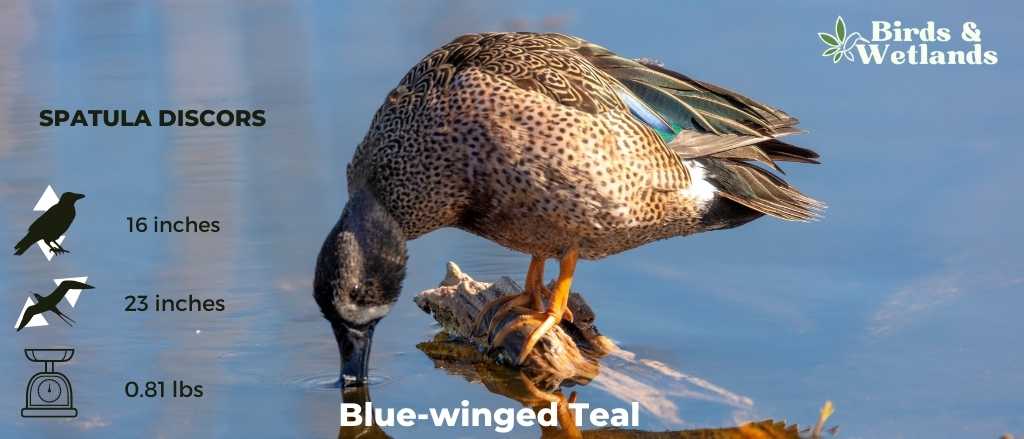

Listen to Blue-winged Teal
Scientific Name: Spatula discors
Length: 16 in
Wingspan: 23 in
Weight: 13 oz
The Blue-winged Teal is a small species of dabbling duck known for its striking plumage and its extensive migratory habits.
Appearance: Male Blue-winged Teals are quite colorful, with a slate gray head and neck, a white crescent in front of the eyes, and a predominantly brown body with specks of black. The name “Blue-winged” comes from the patch of blue feathers visible on their wings during flight. Females, in contrast, are primarily brown and subtly mottled to provide camouflage.
Diet: The Blue-winged Teal feeds mainly on plant matter, such as seeds and aquatic vegetation. However, they also supplement their diet with small invertebrates, especially during the breeding season. They are known for their “dabbling” behavior, where they feed at the surface of the water rather than diving.
Reproduction: Blue-winged Teals prefer to nest on the ground in grassy areas near water. The female typically lays a clutch of 9 to 13 eggs, which she incubates alone for about three weeks. After hatching, the ducklings can feed themselves but remain under the mother’s protection until they are capable of flying.
Blue-headed Vireo
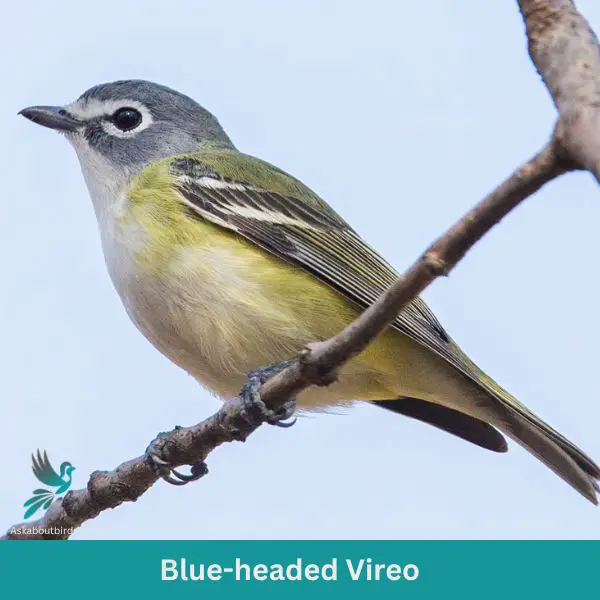
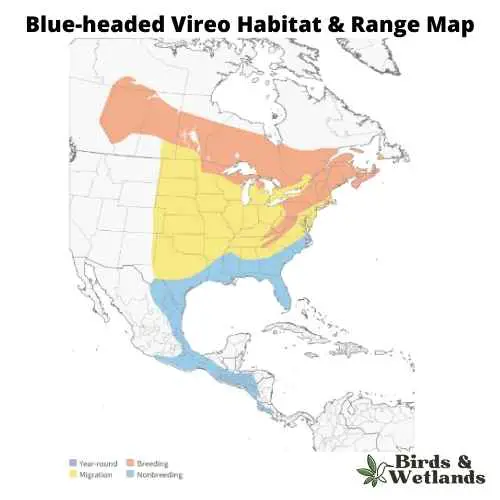
| Trait | Blue-headed Vireo |
|---|---|
| Scientific Name | Vireo solitarius |
| Length | 5-5.5 inches |
| Wingspan | 7.9-9.8 inches |
| Weight | 0.4-0.6 ounces |
The Blue-headed Vireo is a songbird recognized for its sharp and clear song as well as its distinct coloration.
Appearance: It has a blue-gray head and nape, contrasting sharply with its white throat and belly. A white eye ring combined with two white wing bars and yellowish flanks further accentuate its appearance.
Diet: The Blue-headed Vireo feeds mainly on insects and spiders. It often forages in the forest canopy, picking prey off leaves and twigs.
Reproduction: The female constructs a cup-shaped nest made of twigs, bark, and spiderwebs, often placed in the fork of a tree branch. Typically, she lays a clutch of 3-5 eggs. Both parents share the responsibility of incubating the eggs and feeding the chicks.
Purple Martin
| Scientific Name | Length | Wingspan | Weight |
|---|---|---|---|
| Progne subis | 7.5-8.7 in | 15.3-16.1 in | 1.6-2.1 oz |
The Purple Martin is the largest North American swallow known for its acrobatic flight and sociable behavior.
Appearance: Adult male Purple Martins have iridescent, dark blue-purple plumage overall, while females and young have a duller, grayish-brown upperparts and white underparts with a grayish chest. The wings and tail are blackish.
Diet: Purple Martins feed almost exclusively on flying insects, including dragonflies, damselflies, flies, beetles, wasps, and moths. They catch their prey in the air, often flying high and covering large distances in search of food.
Reproduction: Purple Martins are cavity-nesting birds and have come to rely on human-provided nesting structures in the eastern parts of their range. The female lays a clutch of 3 to 6 eggs, and incubates them for about 15 to 18 days. Both parents feed the young and defend the nest.
Where to Spot Florida’s Blue Birds
Discover the best bird-watching spots in Florida, where the varied landscapes and subtropical climate offer a paradise for Blue birds and other avian species alike.
- Everglades National Park: Home to over 350 bird species, this sprawling wetland is a must-visit for anyone interested in bird watching. The Anhinga Trail and Shark Valley offer excellent viewpoints for Blue birds.
- Sanibel Island: Famous for its shell beaches, Sanibel Island also boasts the J.N. “Ding” Darling National Wildlife Refuge. With its mangrove swamps and estuaries, this is another hotspot for seeing Blue birds and other waterfowl.
- Merritt Island National Wildlife Refuge: Located near the Kennedy Space Center, this refuge offers brackish marshes and pine flatwoods, attracting a wide variety of birds, including several species of Blue birds.
- Corkscrew Swamp Sanctuary: This ancient bald cypress forest offers 2.25 miles of boardwalk to explore, making it an excellent venue to spot various species of Blue birds in a unique setting.
- Dry Tortugas National Park: Accessible only by boat or seaplane, this remote park is a key nesting site for seabirds and an excellent location to spot Blue birds, especially during migration season.
| State’s Blue Birds | Top Spots for Blue Birds |
|---|---|
| Georgia’s Blue birds | 1. Okefenokee National Wildlife Refuge 2. Piedmont National Wildlife Refuge 3. Cohutta Wildlife Management Area |
| Alabama’s Blue birds | 1. Wheeler National Wildlife Refuge 2. Bon Secour National Wildlife Refuge 3. Oak Mountain State Park |
FAQs on Blue Bird Species Found in Florida
What is the best food to attract blue-colored birds to my backyard?
Blue-colored birds have different diets, but many of them enjoy sunflower seeds, which can be placed in bird feeders. For example, Blue Jays love sunflower seeds, peanuts, and suet, while the Indigo Bunting primarily feeds on seeds and insects. Blue-gray Gnatcatchers mainly feed on insects but may also eat small fruits. It is essential to provide a variety of foods in backyard bird feeders to attract different species of blue-colored birds. Additionally, providing fresh water in a bird bath can also help attract these beautiful birds to your backyard.
What is the range of black-throated blue warblers?
The black-throated blue warbler is a migratory bird found in different regions at different times of the year. During the breeding season, they are commonly found in the deciduous and mixed forests of eastern North America, from southern Canada to the northern and central regions of the United States. In the winter, they migrate to the Caribbean and southern Florida, and some even reach Central and South America. The barn swallow range map and the indigo bunting range map can give additional insights into the migratory patterns of similar bird species.
How can I identify the blue-gray gnatcatcher?
The blue-gray gnatcatcher is a small bird with a distinctive appearance. It has a light gray body, a bluish-gray head, and a white belly. The tail feathers are long and black with white edges. Males may have a thin black line on the forehead during the breeding season. The blue-gray gnatcatcher scientific name is Polioptila caerulea. This bird is commonly found in deciduous and mixed forests, forest edges, and open woodlands with scattered trees throughout North and Central America.
What should you feed young birds?
Feeding young birds can be quite different from feeding adults. Young birds primarily need a protein-rich diet to support their rapid growth. Insects are an excellent source of protein and are commonly fed to young birds by their parents. However, it’s essential to understand the dietary needs of specific bird species. For example, blue-colored birds like the blue-gray gnatcatcher primarily feed on insects. If you find a young bird out of its nest, it is usually best to leave it alone as its parents are likely nearby and will continue to feed it. Do not give birds bread, milk, or human food as it is not suitable for them. If you are unsure, contact a local wildlife rehabilitation center or a veterinarian for guidance.

